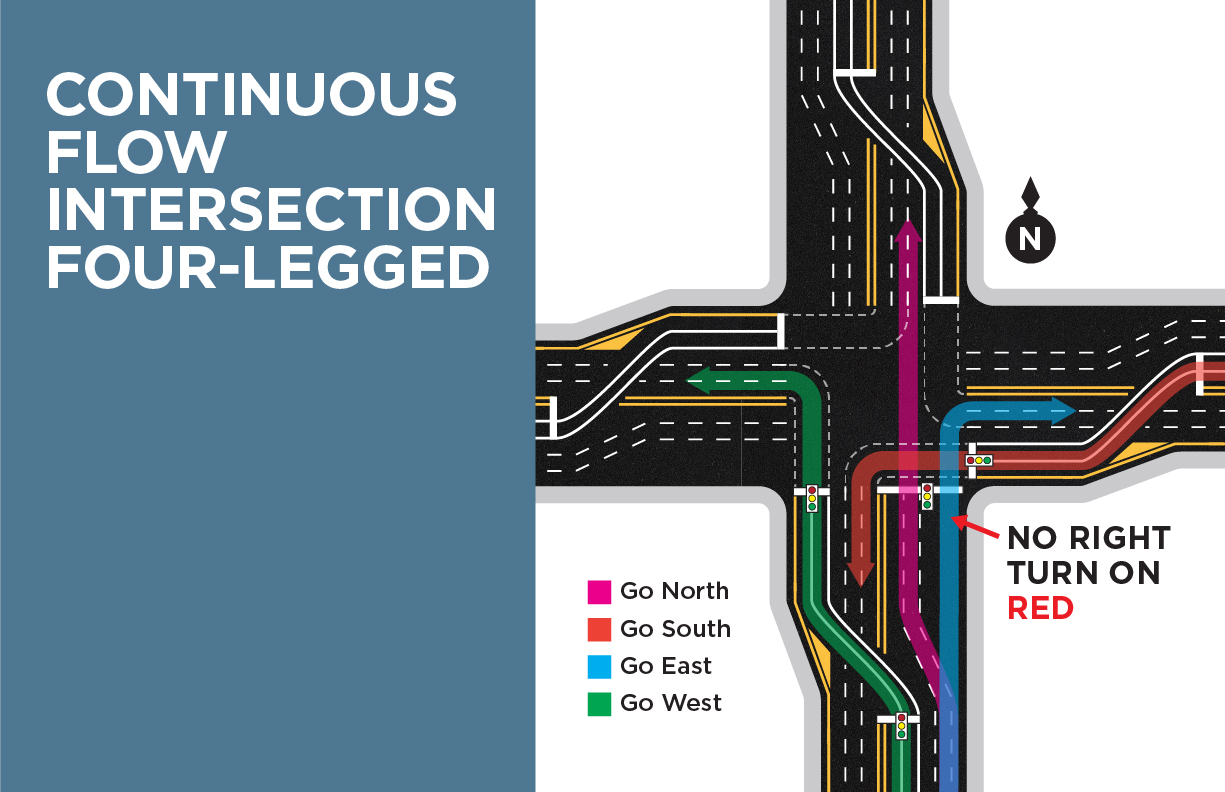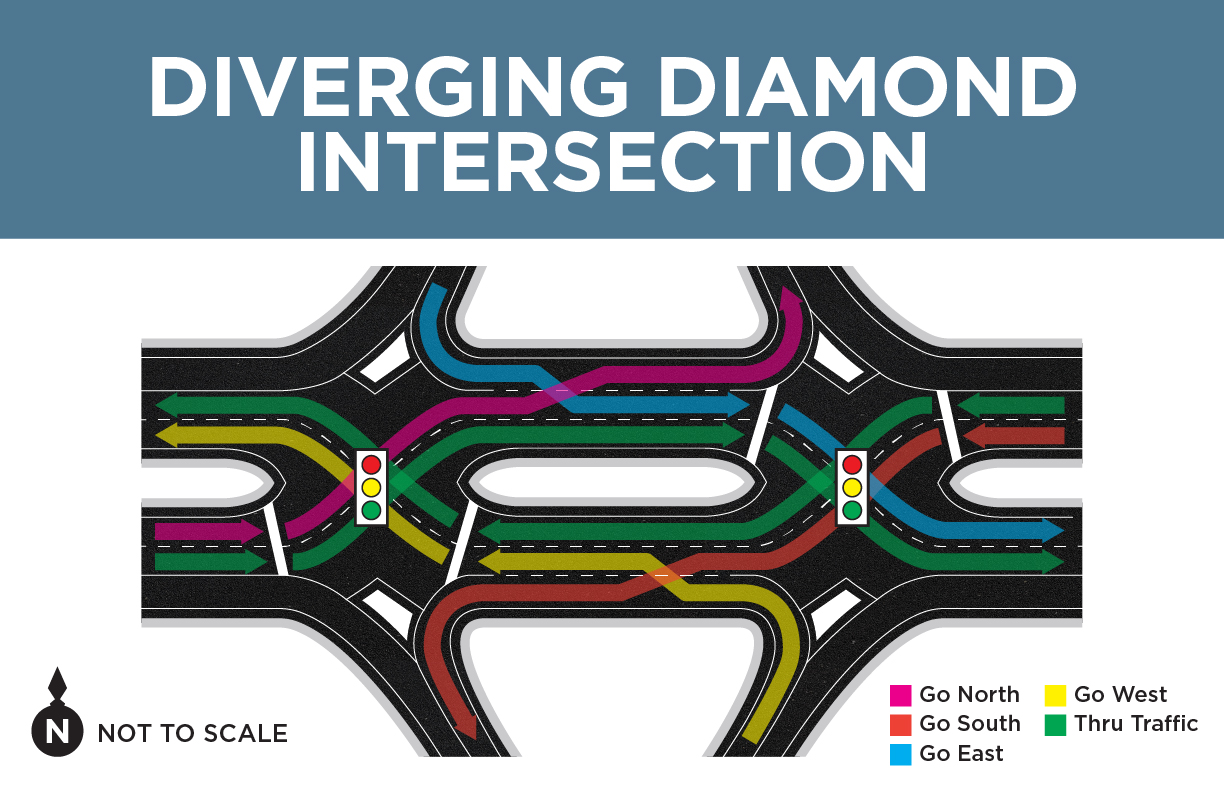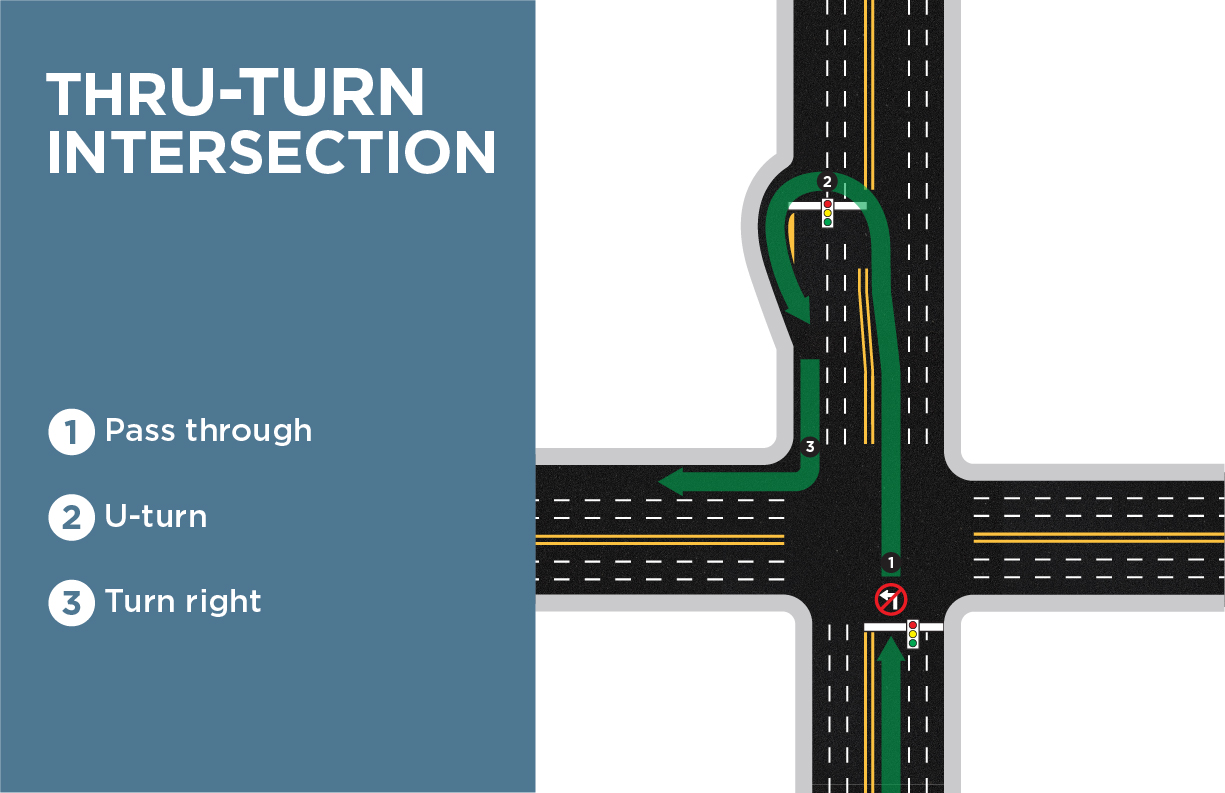Section 9: Rules of the Road
Intersections
At all intersections, slow down and search for traffic controls, oncoming traffic and cross traffic, pedestrians and bicyclists, road conditions, and objects that block your view.
Do not rely on others to obey traffic signals or signs. They may not yield the right-of-way. Be prepared to avoid a crash.
Before moving after a stop, check for traffic and bicyclists. Look left, right, and then left again before entering the intersection. When a light turns green, make sure your path of travel is clear and there is no cross traffic.
Never think that another driver will give you any extra space. Do not turn into a lane just because an oncoming vehicle has a turn signal on. The driver may plan to turn after they pass you, or they may have forgotten to turn their signal off.
- As you approach an intersection—check traffic thoroughly in all directions. Brake smoothly and evenly and maintain lane position.
- When stopping at an intersection—come to a complete stop behind any stop signs, signals, sidewalks, or stop lines. If stopping behind another vehicle, maintain a safe gap. You should be able to see the vehicle’s rear tires ahead of you.
- Driving through an intersection—check traffic thoroughly in all directions. Keep both hands on the wheel, slow down, and yield to any pedestrians or traffic in the intersection. Do not change lanes while proceeding through the intersection.
- Once through the intersection—continue checking mirrors and traffic behind you. Accelerate smoothly. If there are multiple lanes of traffic, accelerate to the speed of traffic, use your turn signal, check your blind spots by looking over your shoulder (head check), check your mirrors, and move into the right-most lane when it is safe to do so (if not already there.)
Continuous Flow Intersection
CONTINUOUS FLOW INTERSECTION LEFT TURN
When making a left turn, watch for signs and a signal directing you to turn on the left-hand side of the road. Observe the first traffic signal direction, and proceed when green by crossing the oncoming lanes of traffic. Observe the direction of the second signal, which will be on the far left of the intersection, and proceed when green by making your left-hand turn at the intersection.
When traveling through a continuous flow intersection, proceed as you normally would, but watch for another light just past the intersection. It’s possible to encounter a red light here, which allows left-turning cars to cross in front of you.

CONTINUOUS FLOW INTERSECTION RIGHT TURN

CONTINUOUS FLOW INTERSECTION FOUR-LEGGED

Divering Diamond Intersection
A particular type of highway interchange is one in which two (2) directions of traffic on the non-freeway road cross to the opposite side of the bridge over or under the freeway. It requires traffic on the freeway overpass (or underpass) to briefly drive on the opposite side of the road from what they are accustomed to. Eliminating many of the left-turn conflicts at the ramps, improves interchange efficiency.
DIVERGING DIAMOND INTERSECTION LOCATIONS
- I-15 & Pioneer Crossing/Main St in American Fork | Link
- Bangerter Hwy & SR-201 in West Valley City/Salt Lake City | Link
- I-80 & 5600 W Salt Lake City | Link
- I-215 & Redwood Rd in North Salt Lake | Link
- I-15 & 500 South in Bountiful | Link
- I-15 & 1100 South in Brigham City | Link
- I-15 & St. George Blvd in St. George | Link
- I-15 & South Main Street in Cedar City | Link

ThrU-Turn Intersection
It helps to alleviate traffic congestion and improve traffic flow by eliminating left turn movements at the intersection. Instead, motorists travel through the intersection, make a signalized U-turn at a location removed from the intersection, and return to the intersection, where they will make a right turn.
THRU-TURN INTERSECTION LOCATIONS

